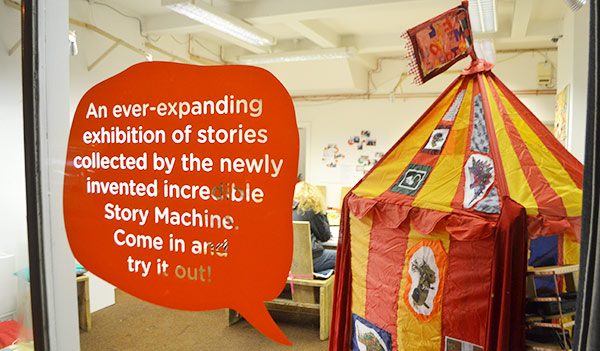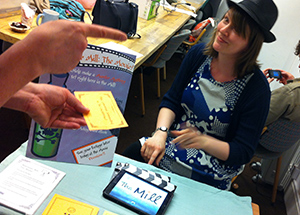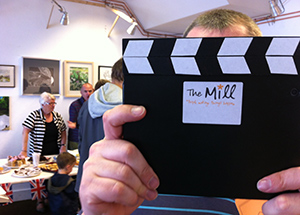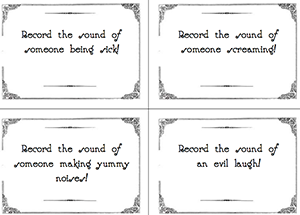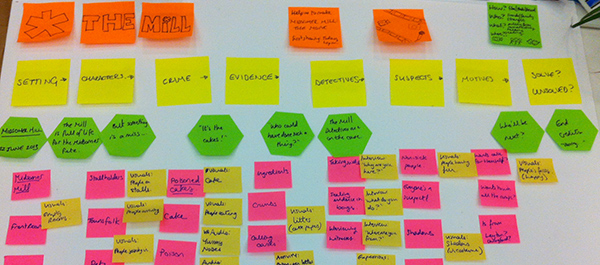Friction in integrating digital storytelling into community activities
For some community groups, the use of technology and digital media is built into the work they do–for example, the Wards Corner Community Coalition‘s very successful use of Stickyworld and social media to tell their story, integrated into the organisation of a whole range of community events.
For other groups, it’s something they would like to weave better into their activities, but which can be difficult to do strategically, for reasons including not just the diversity of skills within the group, but the time and organisational requirements for volunteers to coordinate everything alongside actually running the events. The challenges are rarely ones around motivation or engagement–volunteers are almost by definition engaged in what they are doing–nor indeed, in an era where many group members will regularly use mobile phones, social media and so on themselves, it is not necessarily solely a trite ‘digital divide’ problem.
Instead, in some cases it seems to come down to something like process friction: the route from someone taking photos or video or talking about what they’re doing at a group event, to those photos or videos or stories (in whatever form) being turned into an ‘output’ such as a blog post, an update to the group’s website, or being shared more widely beyond the group (perhaps even to promote it), can be strewn with gaps and bumps and contingencies which make it slow or fractured, from technology incompatibility to issues with user accounts to mental models of how systems work. The route probably involves multiple people, each with his or her own interests, skills and time commitments.
In user experience design practice, the notion of reducing friction in interactions has been around for a while (at least since Alan Cooper‘s book The Inmates are Running the Asylum), but it is usually contextualised very much in terms of individual people’s interactions–e.g. one ‘user’ sharing his or her photos via Instagram, buying something online, updating software, and so on. The group context, and its complexities, are missing. Even in the academic field of computer-supported cooperative work, which focuses on interaction design for cooperation, the scope has generally been inter-/intra-workplace collaboration, with an emphasis on scalability in enterprises, rather than the kinds of nuanced, diverse intricacy of community groups’ activities together. Even considering how the different kinds of structure, relationships and ‘work patterns’ within a volunteering context compare with those in a workplace can provide insights as to how the friction potentially differs.
All this points to the possibility for community-led design to reduce this process friction, as the Royal College of Art and the Open University have been exploring in our strand of the Creative Citizens project. Community-led design (hopefully) means that the problems addressed are framed by communities themselves, facilitated by designers and researchers, and that solutions co-developed are responsive to the actual issues and nuances of groups’ activities. The research team–at the RCA, Alan Outten, Catherine Greene, Gail Ramster, Lizzie Raby and Dan Lockton (myself), with help from visiting researcher Cristina Gorzanelli–have brought a range of design, research and facilitation skills, but it is communities themselves who ultimately need to have ownership of what is developed.
Questions we’ve explored include aspects of whether the creative potential of digital technology can be a factor in motivation and greater engagement with in community groups–what are the rewards for involvement? Can the opportunity to be creative, and show off/demonstrate this to other local people (or people wider afield) through the group be a sufficient motivator for being engaged? Does this kind of creative work in a community context help generate a greater sense of belonging?Â
Working with The Mill
At the RCA, we have been working with The Mill, a community centre in Walthamstow, east London, which provides space and resources for local creative citizens to organise groups, events and activities for adults, children and families, ranging from art exhibitions to book clubs to language classes. Through a process of research and discussion with both volunteers at The Mill and participants in activities–including tools such as asset mapping–we arrived at a collaborative brief around enabling the stories that The Mill community wanted to tell, to be seen and heard more widely, more easily, through a combination of digital (and physical) technology and low-tech artefacts and activities. These needed to fit with, contribute to, and even extend the activities that already take place at The Mill, enabling not just an outlet for the existing community, but a way of drawing in the wider community, and providing evidence of The Mill’s impact on its local area, through integration with The Mill’s existing online presence.
The focus on storytelling, in one form or another, is common across a number of elements of the Creative Citizens project, including the Creative Networks strand‘s work with the Moseley Exchange in Birmingham and South-Blessed in Bristol. In each case, the programmes, activities and artefacts developed have responded to the particular community contexts: there is no ‘one size fits all’ here, and the same was true with The Mill.
Storytelling through murder mysteries
Last summer, as an initial foray into enabling creative digital storytelling linked to a physical event, Alan Outten and Gail Ramster helped The Mill community devise, plan and create the ‘Midsomer Murder at The Mill‘ film at the Summer Fête, in which visitors and volunteers acted in and filmed a short murder mystery during the event, using low-tech artefacts such as challenge cards (see images below) and adding a ‘clapper board’ to an iPad mini, providing a simple prompt to structure the videography.
As well as supporting the creativity and existing skills of some community members, and enabling them to direct others, this also allowed some visitors a practical opportunity to practise using The Mill’s iPad mini as a video and stills camera. The film produced acted as an initial demonstration of the skills and creativity inherent within The Mill community, and evidence of the participatory involvement of visitors to the centre, and was useful as an example later in the project of the kind of content that could be co-produced within the centre.
In the next post in this series, we’ll introduce the next stage in our engagement with The Mill–understanding how storytelling could best be incorporated into the everyday running of the centre, and the groups, events and activities that form the centre’s work–through co-creation workshops leading to the Story Machine itself.

